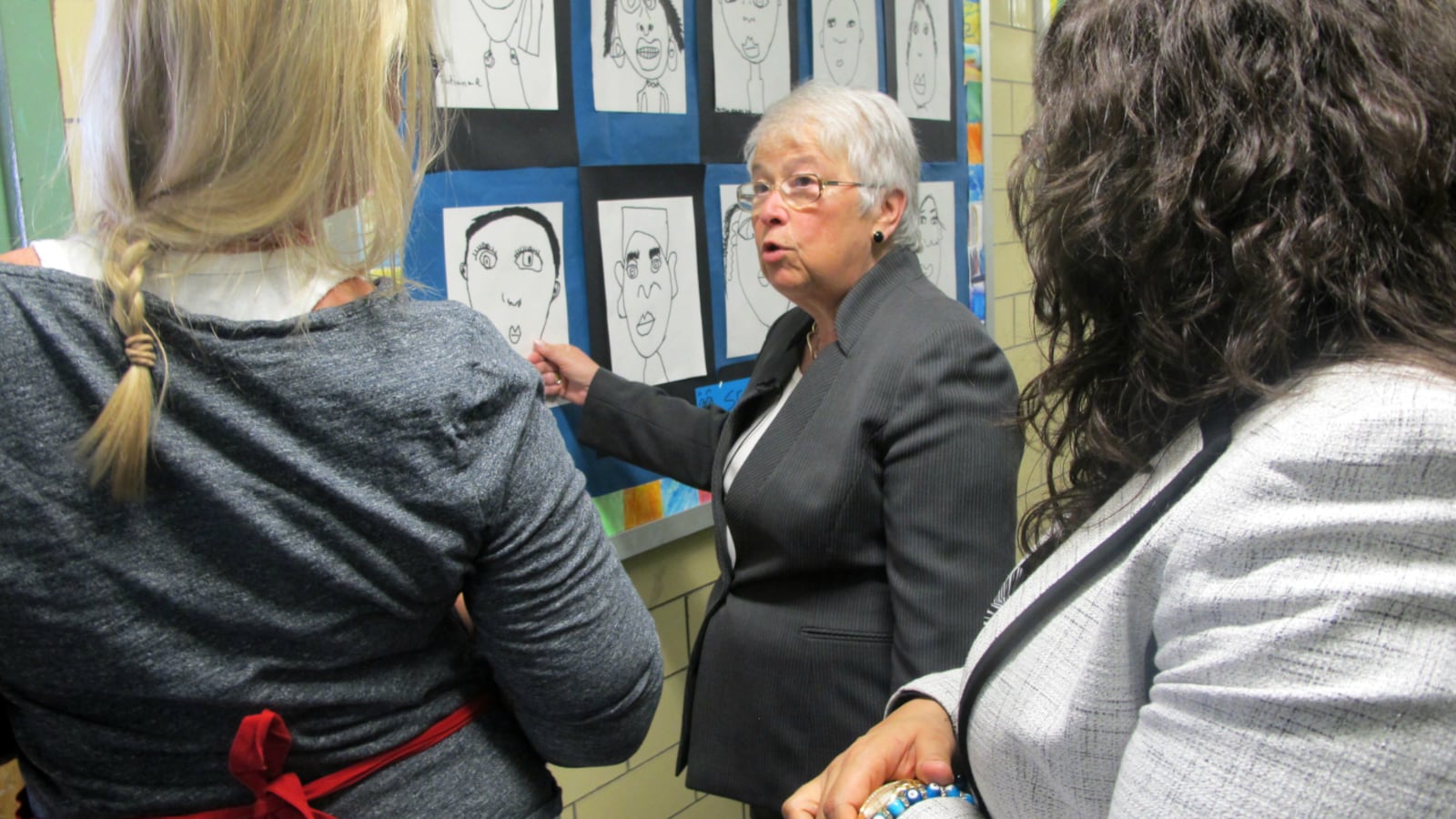Since Mayor Bill de Blasio unveiled his strategy for turning around the city’s lowest-performing schools seven months ago, officials have said all 94 schools would have to meet specific goals to avoid serious changes, including closure.
The city is now moving closer to determining those goals, as officials shared initial rubrics with schools this month and began setting goals for the next two years. Unlike the city’s “school snapshots,” which measure schools in identical ways, the schools in the Renewal program will have some choice as to how the city determines whether they’re measuring up.
With state deadlines approaching, the Department of Education is finalizing that menu of data points that struggling schools will use to measure their progress over the next two years. Attendance, state test scores, and graduation rates are included, and officials said they are still crunching parent and student survey data to come up with a half-dozen other metrics.
Chancellor Carmen Fariña said the menu showed that she was serious about holding schools accountable for improvement.
“We have established clear and rigorous school-specific benchmarks that schools must meet, or they will face consequences including changes to leadership and faculty of the school, school consolidation, and even closure as a last resort,” Chancellor Carmen Fariña said in a statement.
Improved attendance will be a required goal for all schools and is the only metric that elementary and middle schools will be expected to show improvement on next year. High schools next year will also be expected to grow their share of students making progress toward graduation, based on how many courses and Regents exams they have completed.
In addition to attendance, elementary and middle schools will have to choose five other data points for which to set goals, three of which must be based on state test scores or former students’ credit accumulation in ninth grade. High schools can choose from graduation rates, pass rates on Regents exams, and course completion. The schools won’t be expected to hit targets for those categories until the end of the 2016-17 school year.
According to sample benchmarks provided to principals, a struggling high school with a four-year graduation rate of 54.8 percent last year would have to improve to 62.3 percent by the end of the 2016-17 school year, a 7.5-point gain over three years. A department official said the targets being set for the schools were “rigorous, but reasonable.”
The to-be-determined benchmarks will be based on a combination of data from parent and student surveys and scores from school quality reviews. Officials said they were only finalizing them now because the surveys were administered last month.
The details come seven months after de Blasio first pledged to spend $150 million over three years to help turn around the 94 schools. At the core of his plan is to flood the schools with resources aimed to support students living in poverty. The money will be used to pay teachers to work extended hours, add after-school summer programs, and hire extra guidance counselors, as well as to provide teachers with on-site training and bring in academic coaches.
It has been an uneven first year for schools under the program, with some receiving extra attention and others complaining that support has been slow to reach them. The program’s pace has been added fodder for critics who say de Blasio’s plan was not aggressive enough to fix schools that have been low-performing for years.
But the administration has put more of a focus on the Renewal schools in recent months, even redirecting more than $50 million from an expansion of the mayor’s after-school initiative.
A principal of a Renewal school said he had noticed the change, saying that a new deputy in his district superintendent’s office has been hired to specifically work with the struggling schools.
“Once I got that person, things started moving more quickly,” said the principal, who said he received a draft of the benchmarks more than a week before a customized version was sent to his school.
Principals and school leadership teams much agree on and submit the goals by June 15, a department spokeswoman said, four days shy of the June 19 deadline for the city to send in a more comprehensive plan for its struggling schools to the State Education Department.

